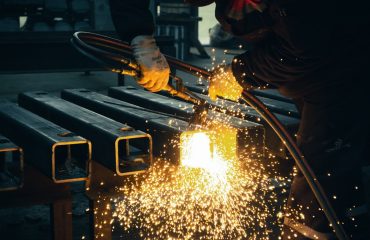Steel bridges, symbols of engineering prowess and efficient transportation, stand as testaments to human ingenuity. Designing these structures is a complex process, demanding a deep understanding of structural mechanics, material science, and construction techniques. This comprehensive guide delves into the key aspects of steel bridge design, providing insights into the intricacies of this fascinating field.
1. Conceptual Design and Preliminary Analysis
The journey of a steel bridge begins with conceptual design. This phase involves defining the project’s objectives, including the bridge’s purpose, location, span length, and anticipated traffic load. Preliminary analysis considers various bridge types – like beam bridges, truss bridges, arch bridges, and suspension bridges – to determine the most suitable option based on factors such as span length, terrain, and aesthetics. Preliminary cost estimations are also conducted at this stage to assess the feasibility of the project. Site surveys, including soil investigations and hydrological studies, are crucial to understand the environmental context and potential challenges. The selection of the optimal bridge type heavily relies on the interaction between these factors and the overall project goals.
2. Load Calculations and Structural Analysis
Accurate load calculations are paramount in steel bridge design. This involves determining all forces acting on the structure, including dead loads (the weight of the bridge itself), live loads (traffic, pedestrians, and wind), and environmental loads (snow, ice, and seismic activity). Different design codes, such as AASHTO (American Association of State Highway and Transportation Officials) and Eurocode, provide guidelines for load calculations. Sophisticated structural analysis techniques, often employing Finite Element Analysis (FEA) software, are used to determine the stresses and deflections within the bridge components under various loading scenarios. FEA allows engineers to model the bridge’s behavior with high accuracy, optimizing the design for strength, stability, and serviceability.
3. Material Selection and Detailing
Steel’s high strength-to-weight ratio makes it ideal for bridge construction. However, selecting the appropriate steel grade is crucial. Factors such as yield strength, tensile strength, and weldability influence the choice. The design also specifies the required steel sections, including beams, columns, and plates. Detailed drawings are then prepared, outlining the precise dimensions, connections, and fabrication requirements. These drawings serve as the blueprint for the fabrication process. Careful consideration must be given to corrosion protection, with options including galvanizing, painting, and other protective coatings to ensure the longevity of the structure. The detailing phase ensures that the bridge can be efficiently and safely constructed.
4. Connection Design and Fabrication
Connections are critical elements in steel bridge design, transferring loads between different structural members. The design of connections must ensure sufficient strength and stiffness to withstand the anticipated loads. Common connection types include bolted connections, welded connections, and a combination of both. The selection of the connection type depends on several factors, including load magnitude, accessibility, and fabrication constraints. Finite element analysis is often employed to analyze the stress concentrations around connections, ensuring their integrity under various loading conditions. Detailed fabrication drawings, specifying welding procedures, bolt sizes, and tolerances, are essential for accurate construction.
5. Construction and Monitoring
The construction phase requires meticulous planning and execution. This involves coordinating the fabrication, transportation, and erection of the steel components. Specialized equipment, such as cranes and heavy-duty lifting gear, is usually required for the erection process. Quality control measures are implemented throughout the construction process to ensure compliance with the design specifications and safety regulations. Regular inspections are carried out to monitor the structural integrity of the bridge during and after construction. Post-construction monitoring may involve strain gauge measurements, visual inspections, and other techniques to detect any potential issues and ensure the bridge’s long-term performance. Proper maintenance and periodic inspections are crucial for ensuring the safety and longevity of the steel bridge.
Designing steel bridges is a multidisciplinary endeavor requiring collaboration between engineers, fabricators, and construction crews. By carefully considering each stage of the design process, from initial concepts to construction and monitoring, engineers can ensure the creation of safe, durable, and aesthetically pleasing structures that serve their intended purpose for decades to come.
SEO Tags:
- Steel Bridge Design
- Bridge Engineering
- Structural Steel Design
- Finite Element Analysis Bridges
- Steel Bridge Construction




